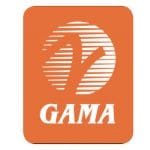8130-3 Airworthiness Approvals: Identifying Incorrectly Issued Tags
By Jason Dickstein
Over the past thirty years, I have watched the 8130-3 tag gain in importance as a mechanism for documenting airworthiness findings. Repair stations holding EASA privileges are especially aware of this in light of EASA 145.A.42 and the EASA-FAA Maintenance Annex Guidance, which stress the importance of the traceability documentation. In the United States, where manufacturers may choose to NOT issue an 8130-3, the FAA issues 8130-3 tags through its designated airworthiness representatives (DARs). DARs typically perform this function based on evidence of current airworthiness. We’ve recognized a disturbing trend in which occasional DARs issue 8130-3 tags in circumstances where they are not allowed to be issued. This creates an immediate issue in which recipients will rely on the 8130-3 tag even though it is not legally issued. It also creates a systemic problem because it masks the market conditions in which 8130-3 tags are not readily available for certain classes of articles and by minimizing the problems it disincentivizes industry and government to find solutions.
Every repair station needs to understand what to look for in their inbound documentation that accompanies the received articles. Recent events have made it especially important for receiving inspectors to understand when an 8130-3 tag is appropriate (and when it is not).
Caveat
This article is focused solely on 8130-3 tags that are signed on the left-hand side (airworthiness approval of new parts). We will have to wait for another article to examine 8130-3 tags that are used as a maintenance release and signed on the right-hand side.
General Rules
When someone issues an 8130-3 tag in compliance with FAA Order 8130.21H, the person typically may only issue the tag for articles that were released from an FAA production approval system. This could not be stated more clearly in the FAA’s Order, which states:
“Except as provided in paragraphs 2-2 and 2-6 of this order, products and articles not produced under an FAA production approval are not eligible to receive an FAA Form 8130-3.”
This means that an article that was produced under a production certificate, parts manufacturer approval (PMA), or technical standard order authorization (TSOA) may be eligible for an 8130-3 tag.
There are two exceptions mentioned in the order; in each of these two cases the check box for non-approved data would be checked (in block 13a), because the article is being compared to data that has not been approved by the FAA.
The first of the two exceptions is for prototype parts. The protype designation is used for articles that are part of a certification project where the project is still pending certification (so the design data has not yet been approved). Such a project will bear an FAA project number. Prototype parts must be described as “prototypes” and must be identified as conforming to non-approved data. Prototype articles that are part of a certification project are not eligible for installation on in-service, type-certificated aircraft. Once the applicable design data has been approved, then the manufacturer may complete an inspection to validate conformity. If the articles conform to that design data and are in a condition for safe operation, then the articles may be considered new.
The second of the two exceptions is for prepositioned parts. Prepositioned parts can arise where an existing manufacturer with an FAA-approved production quality system is developing a new type certificate or supplemental type certificate. Prepositioning occurs before design approval has been granted, where the articles are production articles that have been conformed as part of the FAA certification project and have been produced under the company’s FAA-approved quality system in accordance with the FAA’s manufacturing regulations. As a practical matter, one reason for prepositioning articles is to support a new aircraft with spares pools at locations used by the launch customer of the new aircraft. The conformed parts would be produced and located at the spares pool sites. The manufacturer must have a process for assessing changes in article configuration between the time the prepositioned parts are produced and the time the design approval is issued. Any changes must be validated for the prepositioned articles and if they cannot be validated then the prepositioned articles would have to be recalled.
What Cannot be Tagged
It is important to understand the limits of the 8130-3 tag — what sorts of articles cannot be issued an 8130-3 tag with a left-hand signature? The most obvious examples are parts that are not new parts and parts that are not in conformity with applicable data. There are several other categories of articles that are ineligible for the 8130-3 tag.
Non-U.S. Articles
New articles that are produced under a non-U.S. production approval are currently not eligible for an 8130-3 tag. The main reason for this is because FAA Order 8130.21H limits the form to be issued for new articles that are manufactured by FAA production approval holders. In essence, this is because the FAA has no control over foreign production approvals, so the FAA is uncomfortable issuing an FAA certification like the 8130-3 tags for those foreign parts.
As a practical matter, this typically means that new articles produced under a European production organization approval (POA) are ineligible for an 8130-3 tag. They are more properly released on an EASA Form 1. This does not stop those foreign articles from being accepted as airworthy articles in the United States when they enter the United States system in accordance with the terms of a United States bilateral agreement.
An important exception to the “no foreign articles” rule lies for parts that were originally produced under an FAA production approval and that remain in the same configuration as the FAA-approved configuration. For example, some suppliers from the United States may have obtained PMA for their production quality system in the United States. They then provide the PMA articles to their POA customer(s) in Europe, who may incorporate them into a higher assembly or who may sell them as spares. The articles are subsequently released under the POA. If the articles remain unchanged, then they have been released under both a PMA and a POA. As PMA articles, they are eligible for 8130-3 tags (and in fact they were probably issued 8130-3 tags to facilitate entry into the European POA system). The fact that they were subsequently received and/or inspected in a POA system does not change the fact that they were released from an FAA production approval system as well. Because of this, when you find Airbus parts in the system with 8130-3 tags, you have to carefully assess whether they were eligible for that tag (e.g., because they had been released from an FAA PMA or FAA TSOA system).
Standard Parts
Typically, standard parts are not eligible for 81303 tags. Some of you may recall that the FAA regulations previously explicitly allowed standard parts to be issued airworthiness approval tags. This permission was removed from the regulations and the FAA removed the ability to get 8130-3 tags on most standard parts by requiring that 8130-3 tags could only be issued for new articles that had been released from production approval systems.
This highlights the obvious exception: if the standard parts were released from an FAA production approval system, then they become eligible for the 8130-3 tag.
Non-Approved Parts
Other parts that are not produced under an FAA production approval also remain ineligible for the 8130-3 tag. This can include categories like commercial parts, parts produced in a maintenance environment (for consumption in the maintenance operation), owner/operator produced parts, and parts produced for defense aircraft outside of an FAA production approval environment.
Incorrectly issued 8130-3 tags can mislead receiving inspectors and installers in a way that undermines airworthiness confidence in the aviation system. If you find an 8130-3 tag that was issued in the wrong circumstances, then communicate with the issuer to make sure that their system corrects the mistakes.




